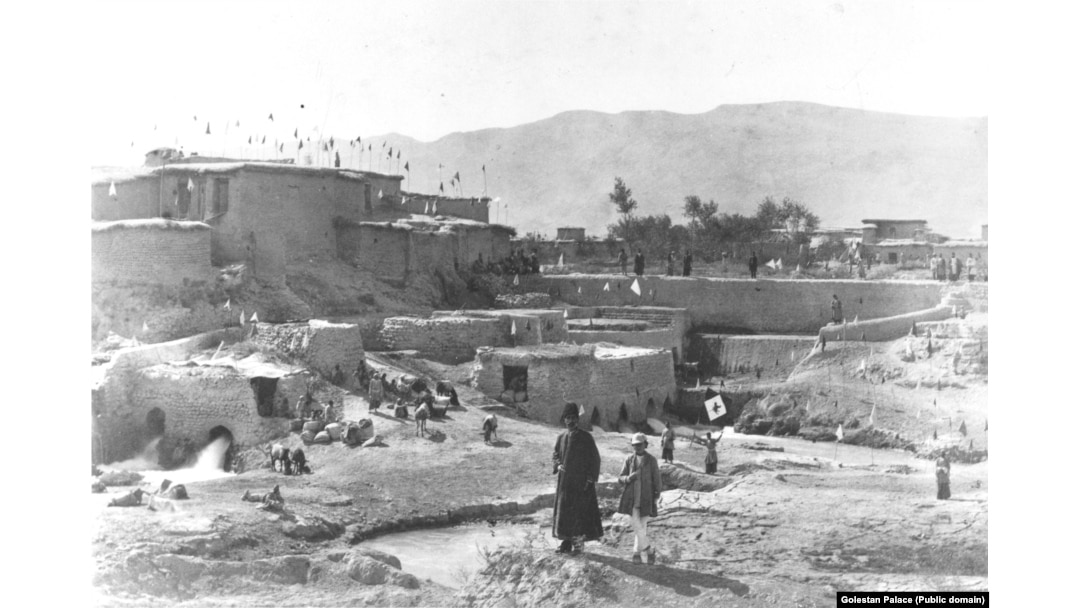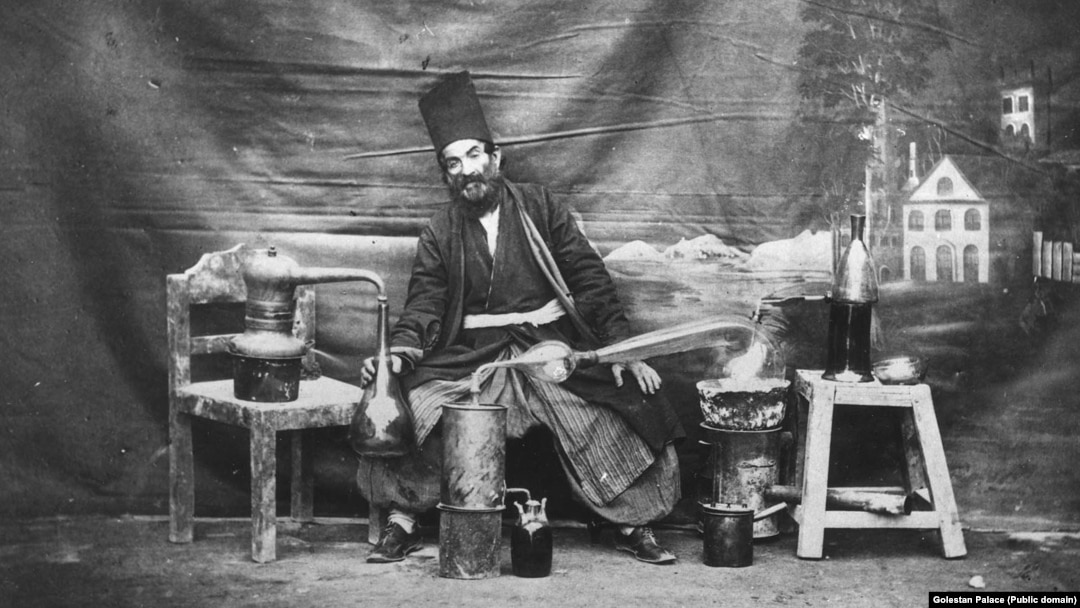A collection of more than 3,000 images showing Iran under the Qajar dynasty (1789-1925) has been leaked online.

The construction of a dam at an unspecified location.
The photos were recently confirmed to have come from the archive of Tehran’s Golestan Palace.

A “royal stablemaster” demonstrating a game of chess with other men.
The photographs were taken mostly in the late 1800s and are some of the first photos ever taken of today’s Iran, which was formally known at the time as the Sublime State of Persia.

The construction of Tehran’s Sepahsalar Mosque in the late 1800s
The leak of high-resolution images caused a sensation in Iran when they were released in early June in a series of Google Drive folders.
A man probably undergoing a form of natural therapy for joint problems called psammotherapy that was first practiced by ancient Greeks. The traditional treatment of burying patients up to their necks in hot sand is enjoying a revival in some Arab countries today.
Some images from the Golestan Palace archives had been released before, such as the above image, which has previously been wrongly described as a thief being "buried alive.
Other images in the leak have never been published before and come without caption information of any kind.
Historian Hamidreza Hosseini told RFE/RL’s Radio Farda that access to the Golestan Palace photos for the general public has previously been so difficult it was "as if they were trying to keep them as far from the public eye as possible.”
The release of the photographs drew a sharp response from Iran’s state media.
One government-linked online news portal criticized the release of the images, saying that “in all countries, publishing a museum’s treasure without permission is criminal in nature.”
A royal encampment near Dastjerd, northern Iran, in August 1894
The photographs are sufficiently old that today they are in the public domain, meaning copyright laws no longer apply. Iran is also still not a signatory to the international Berne Convention for the protection of literary and artistic works.
It is unclear what motivated the leaker to release the images online, but the Golestan Palace has been criticized in the past for limiting access to images to its vast photo archives.
Some images among the thousands that were leaked online appear to have been sexually suggestive, or overtly erotic.
All apparently nude photos have been censored with the same multiple layers of physical covering seen in the image above.
A dentist tends to Naser al-Din Shah.
Several of the photographs feature Naser al-Din Shah, a Qajar king who ruled Iran from 1848 until his assassination in 1896.
"Dwarves" of Naser al-Din Shah's court
Naser al-Din was instrumental in kickstarting what has been called the “golden age” of Iranian photography.
A portrait of Anisodoleh, the wife of Naser al-Din. Given the racy nature of the photo, it was almost certainly taken by the shah himself.
The shah traveled widely in Europe and became an enthusiastic proponent of photography, a technology that was becoming widespread in the West by the mid-1800s.
The captured chief of the Mangurs, a Kurdish tribe of northwest Iran
The shah was a skilled photographer in his own right and is believed to have shot several images included in the leak.
Naser al-Din Shah
Many of the photos have the clarity and dreamlike depth of field typical of large-format glass plate cameras, which were the gold standard of the day for image quality.
Some images appear to be intentionally goofy, but the long exposure times of early photographic techniques required statue-like poses.
Several photos were taken outside Iran, possibly by the shah or his photographers on some of his many foreign trips.
Tbilisi in the late 1800s
The above image shows central Tbilisi photographed from across the Kura River, looking toward Mtatsminda.
Istanbul in the late 1800s
After the leak of the images, the Golestan Palace management announced that they would be publishing the photographs themselves imminently.


